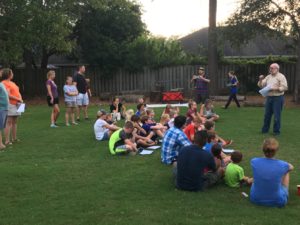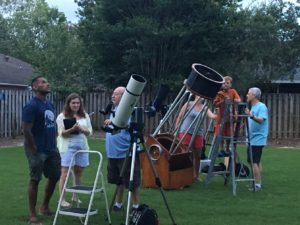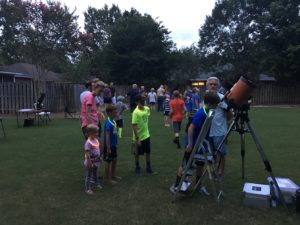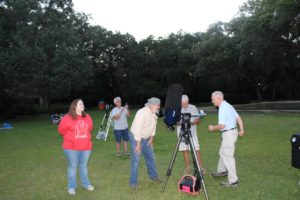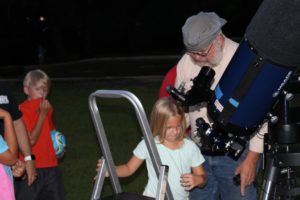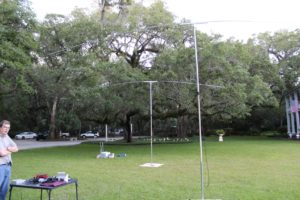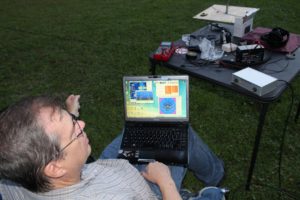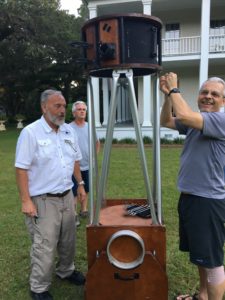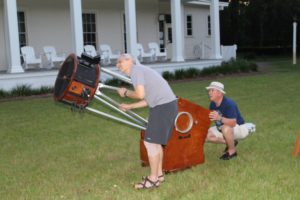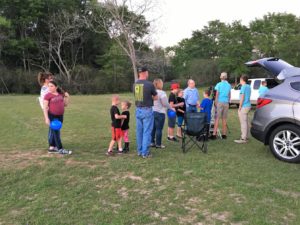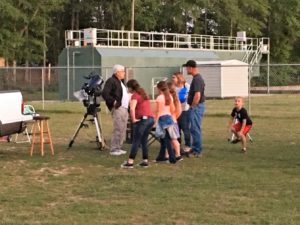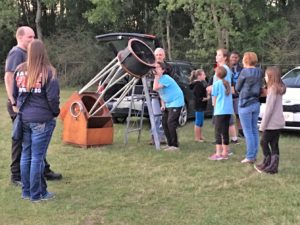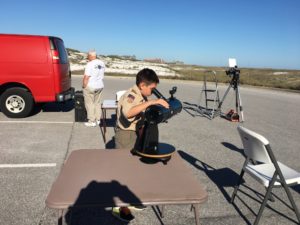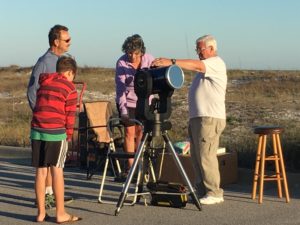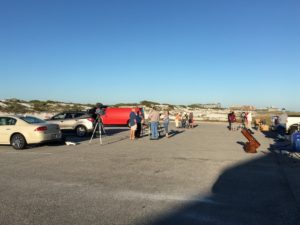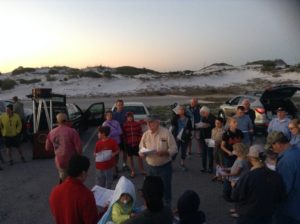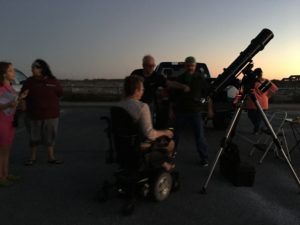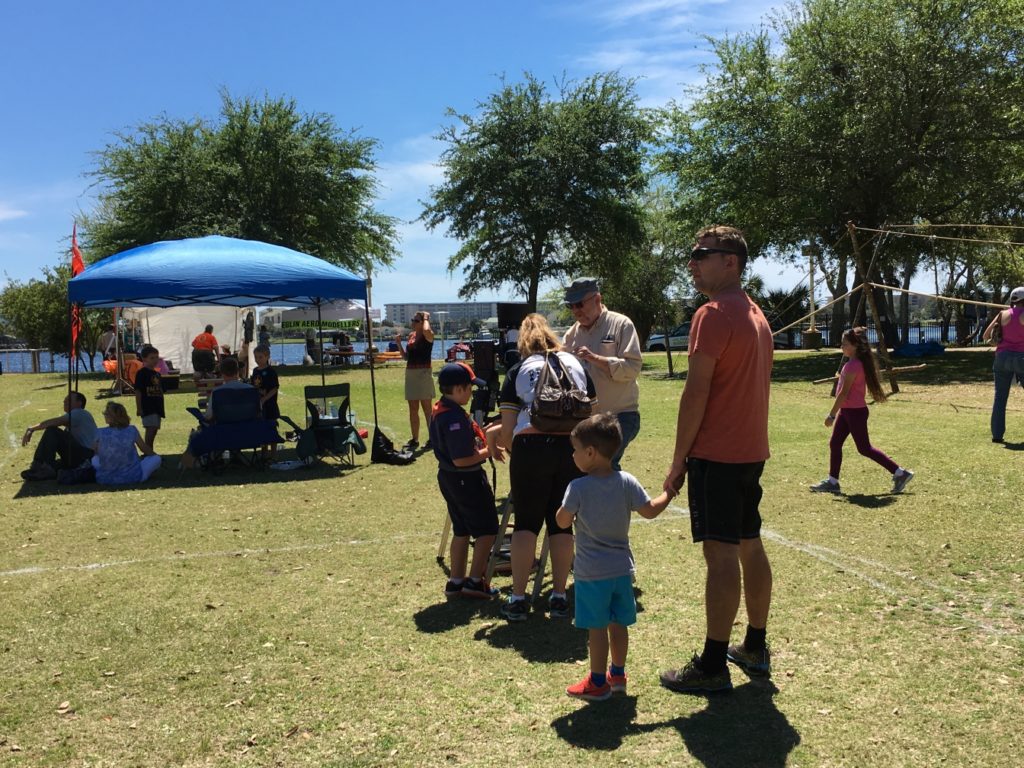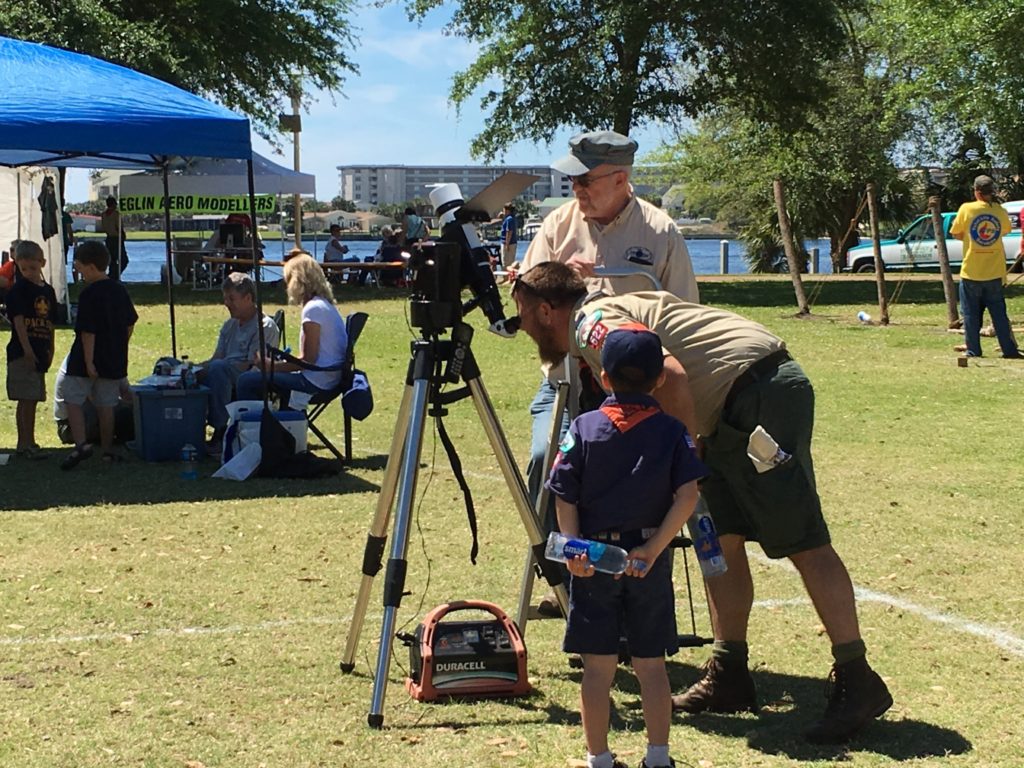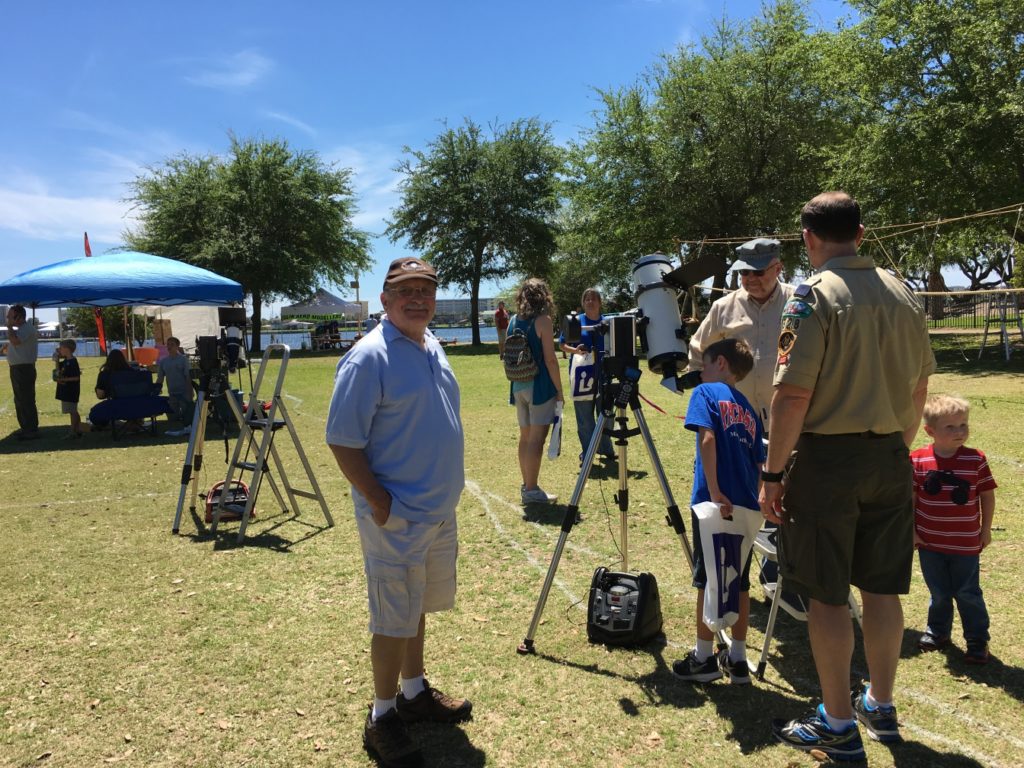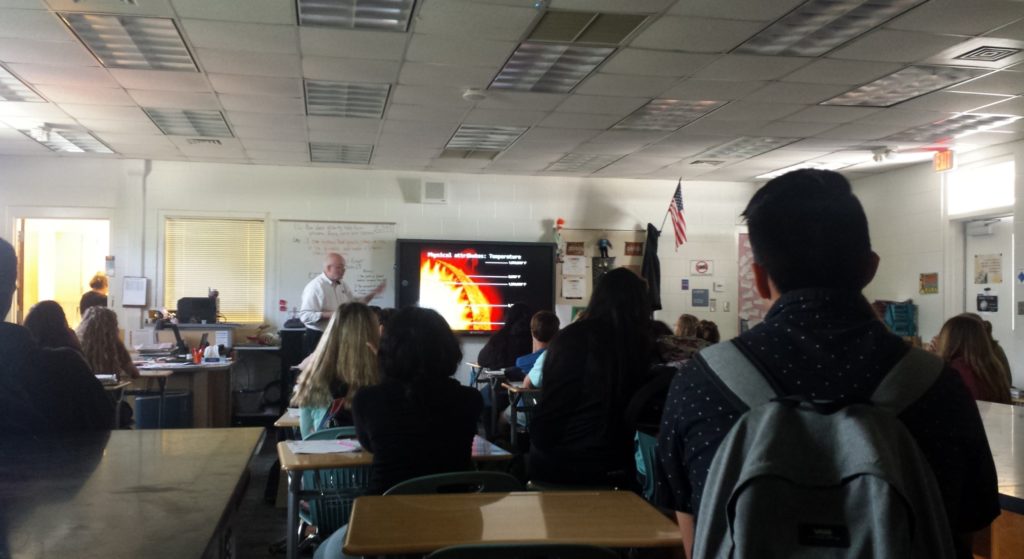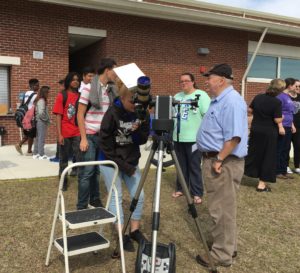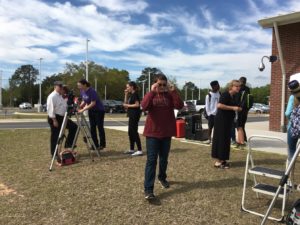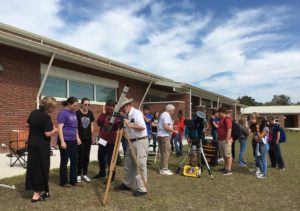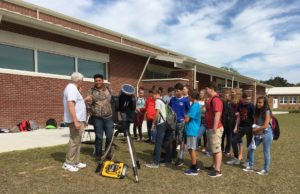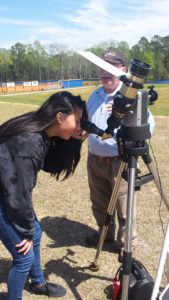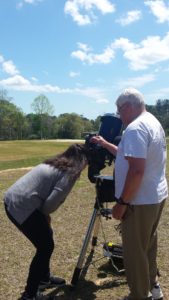Our first public star gaze at Grayton Beach State Park was a qualified success. We setup solar telescopes three hours before sunset as usual, unfortunately, there were only a few guests to take advantage of them.
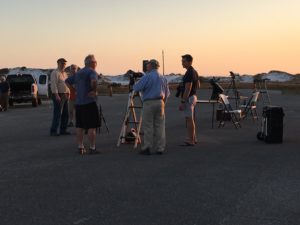
Taking a last look at the setting Sun.
One person that did show up was photographer Todd Douglas who was on assignment for
Emerald Coast Magazine. He was there to get photos for the magazine’s upcoming article on Astronomy. It is always amazing to see the results of an artist at work. The previews he showed us were amazing. We really look forward to the magazine’s article.
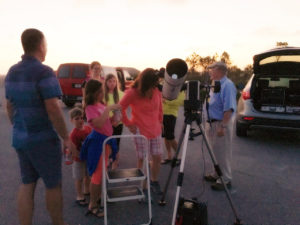
Guest observers view Jupiter at dusk.
As the Sun started to set, the clouds started to gather. But, they were broken enough that we were able to view through the gaps. The first target visible was Jupiter easily seen in the evening dusk. By the time the sky was fully dark the broken clouds were lit fairly well by the surrounding communities. However, it was obvious from the dark skies in between that Grayton Beach, absent the clouds, would have quite dark skies.
We observed an eclectic set of objects. Whatever was visible through the holes, we looked at:
- Jupiter
- M 42 (Orion Nebula)
- M 65 & M 66
- M 44 (Beehive Cluster)
- M 41
- Alcor/Mizar
The skies in between the brightly lit clouds were dark enough that we could view both components of the Whirlpool Galaxy (M 51). That is unusual for a site as close to the gulf as the state park is. We look forward to a cloudless event at Grayton Beach.
One again we thank Marietta Hausch for her event photos.
The NWFAA members who supported our first Grayton Beach star gaze were:
- Frank Atchison
- Tom Haugh
- Dennis & Marietta Hausch
- Ken Leone
- Robert Sutphen
